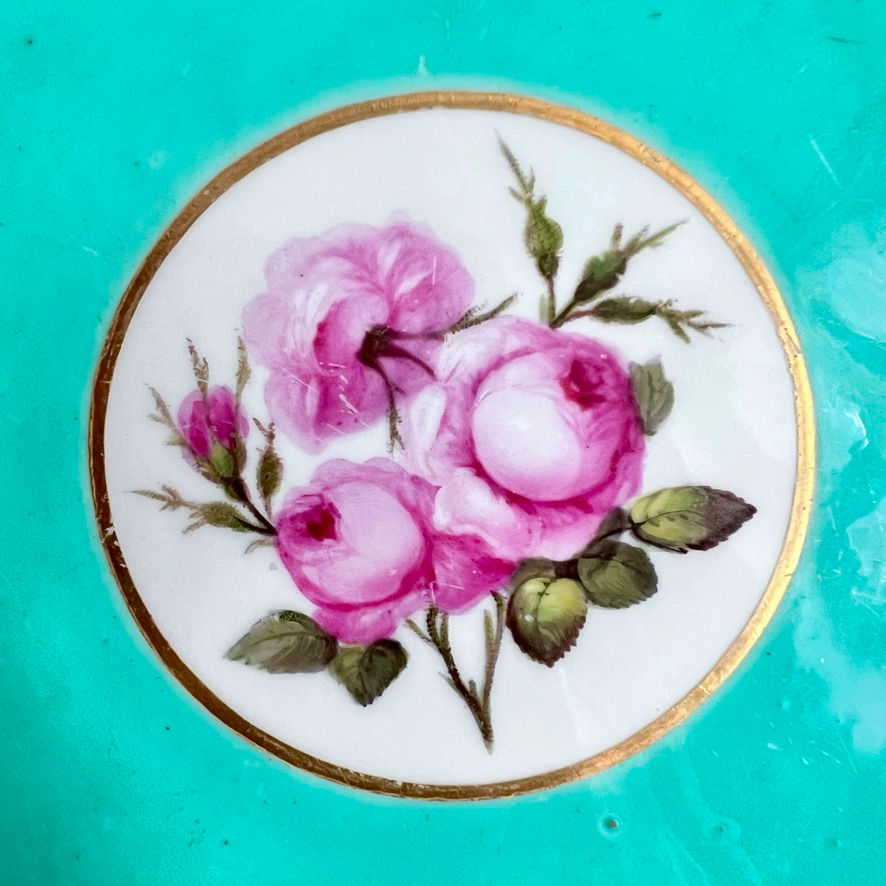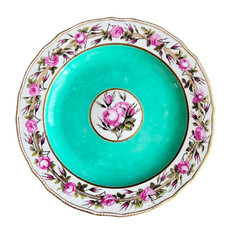Search
Camden roses
- willa
- Jul 25, 2024
- 3 min read
A little while ago I showed a dessert service painted by the famous William Billingsley, you can find the blog post (and the dessert service) here. Today, I have another set of items painted by this iconic porcelain artist, who would go on to change the course of British ceramics.
These three dishes and one plate were made by the Derby factory in 1795, and form part of a famous dessert service called the "Earl of Camden service". This was a huge service ordered by Lady Camden in 1795. It had to be produced under great, and unrealistic, time pressure and was notoriously late, much to Lady Camden's chagrin. She wanted the service to be produced by only the best artisans and therefore William Billingsley was tasked with painting all items - but it is thought that when it was clear the deadline was impossible to make, he enlisted the help of John Brewer for some of the last items, such as the ice pails.
These items show the typical "Billingsley" roses: a beautiful naturally flowing garland of English roses interspersed with buds, trailing around a crisp gilt ribbon. The way the roses link into each other, the way each individual one is completely unique, the light effects achieved by rubbing out some of the pink paint, and the very fine buds and foliage all point to these being from Billingsley's hand.
So what exactly is so special about William Billingsley?
William Billingsley was a brilliant but notoriously difficult man who left behind a trail of debts, broken hearts and mystery - but he was also one of the most important people in the history British porcelain. Billingsley revolutionised the way British decorators painted flowers; he added a freedom and artistry that now singles out British flower painting, and he created a new technique for painting roses, which you can see in this design. Rather than trying to paint the light falling onto the rose petal, he would wipe out a bit of the pink paint, creating a very fine light effect that is more alive. A subtle but important change that created a whole new painting style on porcelain that was quickly adopted all over Britain - and that's how you can immediately recognise English porcelain.
Billingsley worked at Derby, Worcester and Mansfield. He also set up his own potteries in Pinxton and Nantgarw and created some of the best porcelain ever made, but racking up great debts, before running off in the dead of night and ending his days at Coalport painting flowers.
Items painted by William Billingsley are rare and very much in demand - together with Thomas Baxter's work they are probably among the most desired pieces of British porcelain.
If you want to read more about him you can read the article I wrote for Homes & Antiques a while ago.
In the meantime, these wonderful dishes are for sale in my shop. They come at a price tag, because they are so very rare and in demand - but they are in great condition and also come with provenance; the plate bears no less than 4 collectors' labels, and as all four items came together it is reasonable to assume that they all have been together all along.
Where to find things
You can find these dishes in my shop, and many more dishes and plates are here. All my available stock can be found here. If you always want to see the latest additions, follow me on Instagram... I post pictures and a story several times a week.
Happy weekend, and go smell some roses! 🌹🌹🌹
This week's treasures:























































































Comentários